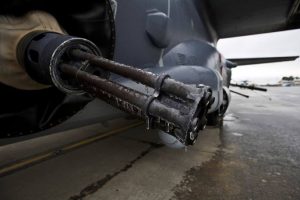
This test is not intended to evaluate the effects of low temperature, thermal shock, rain, or icing. These may be determined using Methods 502.5, 503.5, 506.5, and 521.3, respectively.
Effects of the Environment
This test induces physical changes in or on the materiel that is not stationary. Examples of problems that could occur during this test are as follows:
- Distortion or binding of moving parts.
- Failure of bonding materials.
- Failure of seals.
- Failure of materials due to freezing/re-freezing of absorbed, adjacent, or free water.
- Changes in characteristics of electrical components.
- Electrical flashover/reduced insulation resistance.
- Fogging of optical systems during freeze-thaw transitions.
- Inability to function correctly due to ice adhesion and interference or blockage of moving parts.
Test Procedures
Method 524 provides three test procedures:
Procedure I, Diurnal Cycling Effects – To simulate the effects of diurnal cycling on materiel exposed to temperatures varying slightly above and below the freeze point that is typical of daytime warming and freezing at night when deposits of ice or condensation, or high relative humidity exist. Test for 20 cycles.
Procedure II, Fogging – For materiel transported directly from a cold to a warm environment such as from an unheated aircraft, missile or rocket, to a warm ground area, or from a cold environment to a warm enclosure, and resulting in free water or fogging. Test for 3 cycles.
Procedure III, Rapid Temperature Change – For materiel that is to be moved from a warm environment to a cold environment (freeze) and then back to the warm environment, inducing condensation (free water). Test for 3 cycles.
Because this is a freezing cycle test, the required temperature range is narrow with cycle ranges between +5 deg C and-10 deg C. Use moisture from local, clean sources and apply as water vapor or free water spray.
